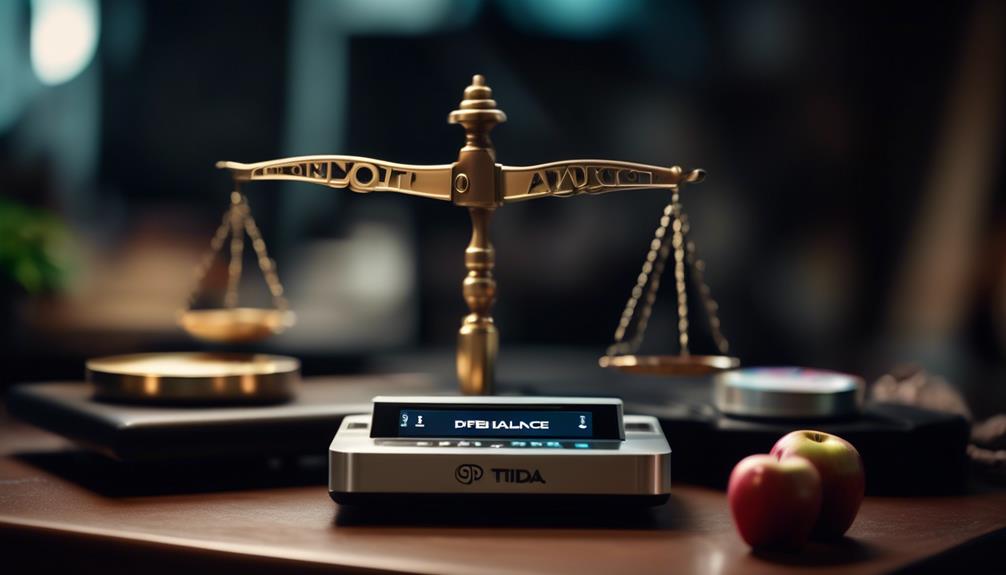
How much is 1,000 Spotify streams?
Navigating the world of music streaming and its remuneration can feel like trying to find your way through a dense forest with no compass. You’re curious about how much 1,000 Spotify streams might put in your pocket, aren’t you? Well, it’s not as straightforward as you might think.
Several factors come into play, from the listener’s country to whether they’re a premium or free user. Plus, Spotify’s per-stream rate isn’t fixed, adding another layer to this complex puzzle.
Stick around, and we’ll untangle this complicated web together, helping you understand how to calculate your potential earnings from Spotify streams.
Key Takeaways
- Payouts from Spotify streams are influenced by factors such as the type of subscription, location, and currency exchange rates.
- Ad revenue on Spotify is divided among rights holders based on popularity, so artists with more streams and popularity will earn a larger portion of the revenue.
- Geographic listener demographics and cultural influences can impact payout rates, with streams from developed countries generally being worth more.
- Artist agreement variables, including contract negotiations and royalty collection processes, significantly impact earnings from Spotify streams. Understanding how royalties are distributed is crucial for maximizing earnings.
Understanding Spotify’s Payment Model

To truly grasp how you earn from your 1,000 Spotify streams, it’s crucial to dissect Spotify’s payment model. Spotify’s revenue comes from two main sources: Spotify’s subscription tiers and advertisements on Spotify.
First, let’s delve deeper into Spotify’s subscription tiers. The platform boasts a freemium model, offering both free and premium subscriptions. You’d naturally assume a paid subscription yields a higher payout per stream, and you’d be correct. Premium streams pay more than free ones. However, the exact payout fluctuates due to factors like the listener’s location and currency exchange rates.
Advertisements on Spotify are the second revenue source. Free users encounter ads, and these ads generate revenue. A portion of this ad revenue is then divided among rights holders. But how does this translate to your 1,000 streams? Well, it’s not direct. The pool of ad revenue gets spread among all the tracks played that month, proportionate to their popularity. So, your earnings from ads will be a small slice of a large pie.
Understanding these mechanisms is vital for your strategies as an upcoming artist on Spotify. Be informed, precise, and innovative in leveraging these revenue streams.
Factors Influencing Spotify Payouts
You must understand that Spotify payouts aren’t arbitrary; they’re influenced by key factors like geographic listener demographics and artist agreement variables.
Where your listeners are located globally can affect the payout rate, as Spotify’s per-stream rates differ by region.
Additionally, the specific terms in your agreement as an artist with Spotify can also significantly impact your earnings.
Geographic Listener Demographics
Geographic listener demographics significantly influence Spotify’s payout rates, considering the economic disparities among different regions. Regional preferences play a vital role in this. For instance, a stream from the US or Europe, where the economy is robust, is worth more than one from a developing country.
Conversely, cultural influences also shape how much artists earn. If your music resonates with listeners in regions with higher-paying rates, you’re likely to earn more. It’s not just about the number of streams; it’s about where they’re coming from. Thus, understanding your audience’s geographic distribution can help optimize earnings.
It’s a complex but fascinating aspect of the streaming economy, highlighting the importance of a global perspective for artists.
Artist Agreement Variables
Spotify’s payout isn’t just a simple calculation of streams; your artist agreement’s specifics can significantly sway the final figures. Contract negotiations play an essential role in defining these specifics. You need to understand how royalties are collected and distributed.
| Variables | Effects |
|---|---|
| Contract Negotiations | Negotiated rates, advances, and bonuses can alter your payout. |
| Royalty Collection | The process affects the timing and amount of your payment. |
| Contract Duration | Longer contracts may have different royalty rates. |
Breaking Down Spotify’s Per-Stream Rate

To fully grasp the complexity of Spotify’s payment model, you need to break down its per-stream rate.
It’s essential to understand the variables that influence the earnings from each stream.
This knowledge will give you a more precise understanding of how much a thousand streams on Spotify can potentially earn you.
Understanding Spotify’s Payment Model
Diving into the intricacies of Spotify’s payment model, you’ll find that breaking down the per-stream rate is crucial for a comprehensive understanding. Spotify’s competition analysis and the impact of subscription tiers play a vital role here.
Consider the table below:
| Spotify’s Competition | Per-Stream Rate | Subscription Tiers Impact |
|---|---|---|
| Apple Music | $0.00735 | High |
| Amazon Music | $0.00402 | Moderate |
| YouTube | $0.00069 | Low |
| Tidal | $0.0125 | Very High |
The rates vary widely across the platform, reflecting the competitive landscape. Subscription tiers also influence payout. Premium tier streams, for example, yield higher returns. Thus, understanding Spotify’s payment model involves inspecting its competitive standing and subscription tier impacts, as they ultimately affect your earnings from streams.
Factors Affecting Stream Earnings
Let’s dissect the per-stream rate of Spotify to grasp how various factors can impact your stream earnings.
The Stream Quality Impact is substantial; higher quality streams often command a higher payout.
Listener Behavior Analysis also plays a role. Spotify tracks the behavior of listeners, such as whether they skip, replay or listen to the full song. These behaviors affect the royalty payout. For instance, a full song play results in higher earnings than a skipped song.
The country of your listeners also matters. Spotify’s payout rates vary by region due to differing advertising revenues and subscription rates.
Additionally, premium users generate more earnings per stream than free users.
Understanding these factors can help you optimize your earnings on Spotify.
Calculating Earnings From 1,000 Streams
Understanding how much you’ll earn from 1,000 Spotify streams involves a complex equation, reliant on various factors such as subscription level and country of listeners. It’s not just about the sheer number of streams, but also about the quality of those streams and their unique characteristics.
To make sense of your potential earnings, consider these vital elements:
- Platform Comparison: Look at how Spotify’s payout rates stack up against other platforms. It’s important to diversify your streaming platforms to maximize your revenue.
- Revenue Strategies: Explore different strategies to boost your streams and consequently your revenue. This could mean investing in playlist placements or collaborations.
- Audience base: The geographical location of your listeners can significantly impact your earnings. Countries with higher subscription rates generally result in higher payouts per stream.
Comparing Spotify to Other Streaming Platforms

When you compare Spotify’s payouts against those of other streaming platforms, you’ll notice significant disparities that can impact your overall earnings. In terms of Streaming Economics, the payout rate per stream varies significantly across different platforms. Digging deeper into Platform Comparisons, you’ll see that Spotify often falls behind other platforms like Apple Music and Tidal.
Here’s a quick table to give you a clearer picture:
| Platform | Payout per 1,000 streams | Total Earnings for 1,000,000 streams |
|---|---|---|
| Spotify | $3 – $5 | $3,000 – $5,000 |
| Apple Music | $6 – $7 | $6,000 – $7,000 |
| Tidal | $10 – $12 | $10,000 – $12,000 |
This table illustrates that while Spotify might be the most popular platform, it may not always offer the most lucrative deals for artists. It’s crucial to consider these variations when strategizing your music distribution. This is especially important if you’re aiming for maximum revenue from your streams. Understanding these comparisons can guide your decisions in this ever-evolving digital music landscape.
Maximizing Your Spotify Stream Revenue
Given these disparities in streaming payouts, it’s essential to formulate a robust strategy to amplify your earnings from Spotify streams. To maximize your Spotify stream revenue, you need to leverage innovative promotional strategies and secure strategic playlist placements.
Here are three specific strategies to consider:
- Utilize social media platforms to promote your music. The more visibility you have, the more likely listeners are to stream your songs.
- Engage with your listeners. This could be through responding to comments or hosting live streams. Building a strong relationship with your audience can lead to more streams.
- Pursue playlist placements. Being featured on popular playlists can significantly increase your streams.
Case Studies: Artists’ Earnings on Spotify

Let’s delve into some real-world examples of artists’ earnings on Spotify to provide tangible insight into how these strategies can impact income.
The Indie Artist Perspective is crucial to understanding the Royalty Distribution Mechanism of Spotify.
Consider an indie band that manages to pull in around 1.5 million streams on their debut album. The payout from Spotify, after applying the standard royalty rate, could be roughly $6,000. This amount might seem substantial initially. However, when distributed among band members and after subtracting production and promotional costs, the net earnings could be minimal.
Another case involves a solo singer-songwriter who lands 500,000 streams for a single song. With the same royalty calculation, the revenue would be around $2,000. Yet, as an independent artist, the funds for studio time, mixing, mastering, and marketing all come from her pocket, diluting the actual profit.
These cases illustrate that while Spotify can indeed provide income, it’s essential to manage your expectations realistically. The platform’s revenue is supplementary for most artists, especially indies. Therefore, innovative strategies to increase listenership and diversify income streams remain crucial for sustainable financial success in the music industry.

